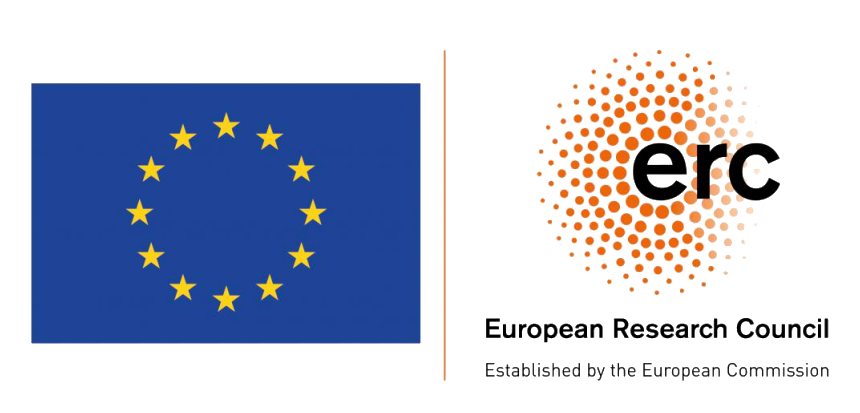κόριον, κορίδιον, κορίσκη, κοράσιον
(Phryn. Ecl. 50, Poll. 2.17)
A. Main sources
(1) Phryn. Ecl. 50: κόριον ἢ κορίδιον ἢ κορίσκη λέγουσιν, τὸ δὲ κοράσιον παράλογον.
[Users of Attic] say κόριον (‘little girl’) or κορίδιον (‘little girl’) or κορίσκη (‘little girl’), but κοράσιον (‘little girl’) is unusual.
(2) Poll. 2.17: ἐπὶ δὲ τῶν θηλειῶν τὰ μὲν πρῶτα ταὐτὰ μέχρι τοῦ παιδάριον – καὶ γὰρ τοῦτο κοινὸν ἀμφοῖν, θηλειῶν τε καὶ ἀρρένων – τὰ δ’ ἐφεξῆς παιδίσκη, κόριον παρὰ Εὐπόλιδι ἐν Αἰξίν, κόρη, κορίσκη, κορίσκιον. τὸ γὰρ κοράσιον εἴρηται μέν, ἀλλὰ εὐτελές, ὥσπερ καὶ τὸ κορίδιον.
As regards the feminine [nouns], the first nouns in the list are the same [as the masculine ones] up to παιδάριον (‘child’, cf. Poll. 2.8–9) – indeed, this [noun] also [is] common to both the masculine and feminine [genders] – while the following ones (which can only be used for females) are παιδίσκη (‘little girl’), κόριον (‘little girl’) from Eupolis in [his] Goats (fr. 30 = C.1), κόρη (‘girl’), κορίσκη (‘little girl’), and κορίσκιον (‘little girl’). Indeed, κοράσιον (‘little girl’) is commonly used – though it is rather ordinary – as is κορίδιον (‘little girl’).
B. Other erudite sources
(1) Ar.Byz. Nomina aetatum 275.15–7 Miller (cf. frr. 67–76 Slater): ἐπὶ δὲ τῶν θηλειῶν, τὸ μὲν βρέφος καὶ τὸ παιδίον ὁμοίως· μετὰ δὲ ταῦτα, παιδισκάριον καὶ παιδίσκιον, καὶ κόριον, καὶ κοράσιον, καὶ κορίσκη, καὶ παρθενίσκη.
As regards the feminine [nouns], βρέφος (‘baby’) and παιδίον (‘little child’) [are used] in the same way [as the masculine nouns]. After these [nouns, there are] παιδισκάριον (‘little girl’) and παιδίσκιον, κόριον and κοράσιον and κορίσκη and παρθενίσκη.
(2) Hsch. κ 3631: *κόριον· μικρὸν κοράσιον vg8A54Br495Σ, ἢ κορίδιον. τὸ λάχανον AS79.
κόριον: A little girl (κοράσιον or κορίδιον). [It also means] a herb.
(3) Σ κ 414 (= Su. κ 2093, Phot. κ 970): κόριον· κοράσιον μικρόν.
Cf. Et.Gud. 340.16: κοῤῥίνιον, μικρὸν κοράσιον.
κόριον: [I.e.] little girl (κοράσιον).
(4) Theognost. Can. 125.27–8 (~ Hdn. Περὶ καθολικῆς προσῳδίας GG 3,1.366.25–8): τὰ διὰ τοῦ ασιον οὐδέτερα μονογενῆ διὰ τοῦ ι γράφονται· οἷον, Βουπράσιον· γυμνάσιον· ἱππάσιον· κοράσιον· τοῦτο οὐ δόκιμον τοῖς παλαιοῖς Ἕλλησι, κόριον γὰρ λέγουσιν.
Lentz (GG vol. 3,1.366, apparatus) believes that the words τοῦτο οὐ δόκιμον τοῖς παλαιοῖς Ἕλλησι, κόριον γὰρ λέγουσιν are an addition by Theognostus and not original in Herodian.
The neuter [nouns] ending in ασιον that have only one gender are written with ι, such as Βουπράσιον (‘Buprasion’, i.e. a place in Elis), γυμνάσιον (‘school’), ἱππάσιον (‘little horse’), and κοράσιον. This [last one is] not approved by the ancient Greeks, for they say κόριον.
(5) Phot. π 26 (= Ael.Dion. π 2): παιδισκάριον, κοράσιον δὲ οὐ λέγεται· ἀλλὰ καὶ κεκωμῴδηκεν Φιλιππίδης ὡς ξενικόν.
Erbse (1950, 134) ascribed the entry to Aelius Dionysius. See also Hsch. π 65.
παιδισκάριον (‘little girl’) [is admitted], but κοράσιον is not said. Furthermore, Philippides (fr. 37 = C.2) has ridiculed [it] as a foreign [term].
(6) [Zonar.] 1241.4–5: κόριον. τὸ μικρὸν κοράσιον. λέγεται δὲ καὶ τὸ μάννα, ὡς λευκοειδές.
κόριον: [It means] a little girl (κοράσιον). It is also said in relation to manna, because it is white.
(7) Thom.Mag. 201.4: κόριον καὶ κορίδιον καὶ κορίσκη καὶ κόρη, οὐ κοράσιον.
Cod. La has κορίσκιον instead of κορίδιον (cf. Poll. 2.17 = A.2).
[You should say] κόριον and κορίδιον and κορίσκη and κόρη, but not κοράσιον.
(8) Schol. (ex.) Hom. Il. 20.404c.4–9: τὰ δὲ διὰ τοῦ ιος, εἰ μὲν τὸ πρωτότυπον εἰς ος ἔχει, διὰ τοῦ ησιος, Ἰθακήσιος ἀπὸ τοῦ Ἴθακος, Ὀχήσιος, βροτήσιος, ἐτήσιος, μεθοδήσιος. εἰ δὲ τρέποιτο τὸ η τοῦ πρωτοτύπου εἰς α παρὰ Δωριεῦσι, διὰ τοῦ α, Πρυμνάσιον, Κορυφάσιον. οὕτως ἔχει καὶ τὸ κοράσιον, ὃ μᾶλλόν ἐστι Μακεδονικόν. b(BE3E4)T
[As regards] the [nouns] ending in ιος, if the noun from which they derive ends in ος, [they end] in ησιος, [such as] Ἰθακήσιος (‘Ithacan’) from Ἴθακος (‘Ithacus’), Ὀχήσιος (‘Ochesios’, i.e. a man’s name: cf. Il. 5.848), βροτήσιος (‘mortal’), ἐτήσιος (‘annual’), μεθοδήσιος (‘methodical’, unattested). If the η [ending of the noun] from which they derive changed to α among the Dorians, [they end] in α(σιον), [such as] Πρυμνάσιον (‘Prymnasion’, i.e. a promontory in Messenia), Κορυφάσιον (‘Koryphasion’, i.e. a cape in Messenia). This is also true of κοράσιον, which is more of a Macedonian [noun].
C. Loci classici, other relevant texts
(1) Eup. fr. 30 = Poll. 2.17 re. κόριον (A.2).
(2) Philippid. fr. 37 = Phot. π 26 re. κοράσιον (B.5).
Bibliography
Erbse, H. (1950). Untersuchungen zu den attizistischen Lexika. Berlin.
CITE THIS
Elisa Nuria Merisio, 'κόριον, κορίδιον, κορίσκη, κοράσιον (Phryn. Ecl. 50, Poll. 2.17)', in Olga Tribulato (ed.), Digital Encyclopedia of Atticism. With the assistance of E. N. Merisio.
DOI: https://doi.org/10.30687/DEA/2974-8240/2025/01/022
ABSTRACT
KEYWORDS
Diminutives-ίδιον-ιον
FIRST PUBLISHED ON
20/06/2025
LAST UPDATE
20/06/2025






